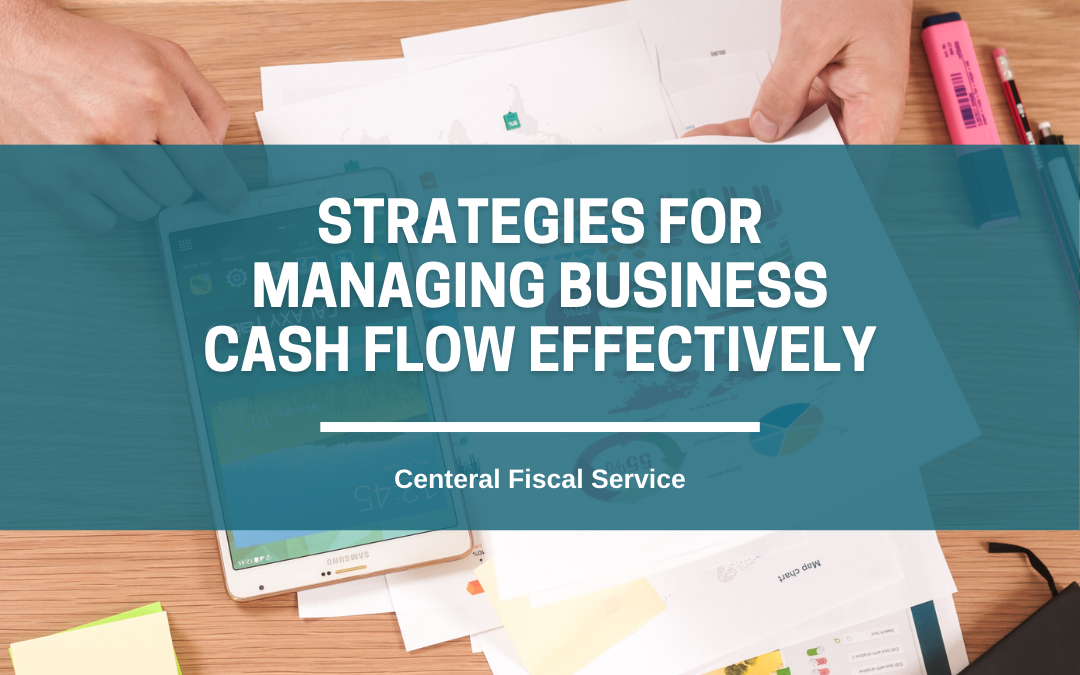How to Manage Business Cash Flow

Introduction
Imagine your business as a ship sailing through the vast ocean of the market. Cash flow is the wind that keeps your ship moving forward. Without it, you're adrift, unable to pay bills, invest in growth, or weather storms. Effective cash flow management is not just about survival; it's about thriving. So, how do you harness this wind to propel your business to success? Let's dive in.
Understanding Cash Flow
What is Cash Flow?
Cash flow is the lifeblood of your business. It's the money that flows in and out of your company, driven by operations, investing, and financing activities. Positive cash flow means more money is coming in than going out, while negative cash flow indicates the opposite.
Why is Cash Flow Management Important?
Effective cash flow management ensures you have enough money to meet your financial obligations, invest in growth, and plan for the future. It's a critical aspect of business finance that can make or break your success.
Best Practices for Managing Business Cash Flow
Monitor Cash Flow Regularly
Regular monitoring is the cornerstone of cash flow management. Keep a close eye on your inflows and outflows to spot trends, identify potential issues, and make informed decisions. Use accounting software to track your cash flow in real-time.
Optimize Accounts Receivable
Your accounts receivable (AR) represents money owed to you by customers. To optimize your AR, consider the following:
- Invoice Promptly: Send invoices as soon as goods or services are delivered.
- Offer Early Payment Discounts: Encourage customers to pay early by offering discounts.
- Follow Up on Late Payments: Don't let late payments slide. Follow up promptly to ensure timely payment.
Manage Accounts Payable
Your accounts payable (AP) represents money you owe to suppliers. Effective AP management can help you maintain a healthy cash flow:
- Negotiate Payment Terms: Ask suppliers for extended payment terms to keep cash in your business longer.
- Prioritize Payments: Pay critical expenses first, such as payroll and rent.
- Take Advantage of Discounts: If suppliers offer early payment discounts, take advantage of them when cash flow allows.
Maintain a Cash Reserve
A cash reserve is a safety net that can help you weather unexpected expenses or slow periods. Aim to maintain a reserve equal to three to six months' worth of operating expenses.
Forecast Cash Flow
Cash flow forecasting helps you anticipate future inflows and outflows, enabling you to plan for lean times and capitalize on opportunities. Use historical data and market trends to create accurate forecasts.
Diversify Revenue Streams
Don't put all your eggs in one basket. Diversifying your revenue streams can help insulate your business from market fluctuations and ensure a steady cash flow.
Leverage Technology
Technology can streamline cash flow management, making it easier to track inflows and outflows, forecast future cash needs, and make informed decisions. Consider using accounting software, cash flow management tools, and other technologies to optimize your cash flow.
Cash Flow Optimization Strategies
Improve Inventory Management
Poor inventory management can tie up cash and hurt your cash flow. Implement just-in-time inventory management to reduce waste and free up cash.
Control Expenses
Regularly review your expenses and look for ways to cut costs. Eliminate non-essential expenses and negotiate better terms with suppliers.
Accelerate Cash Inflows
Offer multiple payment methods, send reminders before payments are due, and consider using a factoring service to accelerate cash inflows.
Delay Cash Outflows
Negotiate longer payment terms with suppliers, take advantage of early payment discounts, and prioritize payments to manage cash outflows effectively.
Business Strategies for Effective Cash Flow Management
Develop a Strong Financial Plan
A strong financial plan is the foundation of effective cash flow management. It should include a budget, cash flow forecast, and strategies for managing inflows and outflows.
Build Strong Relationships with Suppliers and Customers
Strong relationships can lead to better payment terms, timely payments, and increased sales. Nurture your relationships with suppliers and customers to support your cash flow.
Invest in Growth Opportunities
When cash flow is strong, invest in growth opportunities to drive future success. Consider expanding your product line, entering new markets, or investing in marketing and advertising.
Be Prepared for the Unexpected
Unexpected events can disrupt your cash flow. Be prepared with a contingency plan that includes a cash reserve, access to credit, and strategies for managing cash flow during lean times.
Conclusion
Effective cash flow management is essential for business success. By monitoring cash flow regularly, optimizing accounts receivable and payable, maintaining a cash reserve, forecasting cash flow, diversifying revenue streams, and leveraging technology, you can harness the wind that propels your business forward.
Remember, cash flow management is not a one-time task. It requires ongoing attention and adjustment. Stay vigilant, be proactive, and always keep one eye on the horizon. With the right strategies and a strong financial plan, you can navigate the waters of the market with confidence and steer your business to success.
FAQs
What is the difference between cash flow and profit?
- Cash flow refers to the actual movement of money in and out of your business, while profit is the amount of money left after all expenses are paid. It's possible to be profitable but have poor cash flow due to timing issues or other factors.
How can I improve my cash flow quickly?
- To improve cash flow quickly, consider accelerating cash inflows by offering early payment discounts, sending reminders before payments are due, or using a factoring service. You can also delay cash outflows by negotiating longer payment terms with suppliers or prioritizing payments.
What is a cash flow statement?
- A cash flow statement is a financial document that shows the inflows and outflows of cash for a specific period. It includes cash flow from operating activities, investing activities, and financing activities.
How can I create a cash flow forecast?
- To create a cash flow forecast, start by analyzing your historical cash flow data. Identify trends and patterns, and use this information to predict future inflows and outflows. Consider market trends, seasonal fluctuations, and other factors that may impact your cash flow.
What should I do if my cash flow is negative?
- If your cash flow is negative, take immediate action to address the issue. Review your expenses and look for ways to cut costs. Accelerate cash inflows by offering early payment discounts or using a factoring service. Consider accessing credit or other financing options to bridge the gap. Most importantly, develop a plan to return to positive cash flow as quickly as possible.


By following these best practices and strategies, you can effectively manage your business cash flow and set your business on a course for success. Happy sailing!

Belum ada Komentar untuk "How to Manage Business Cash Flow"
Posting Komentar